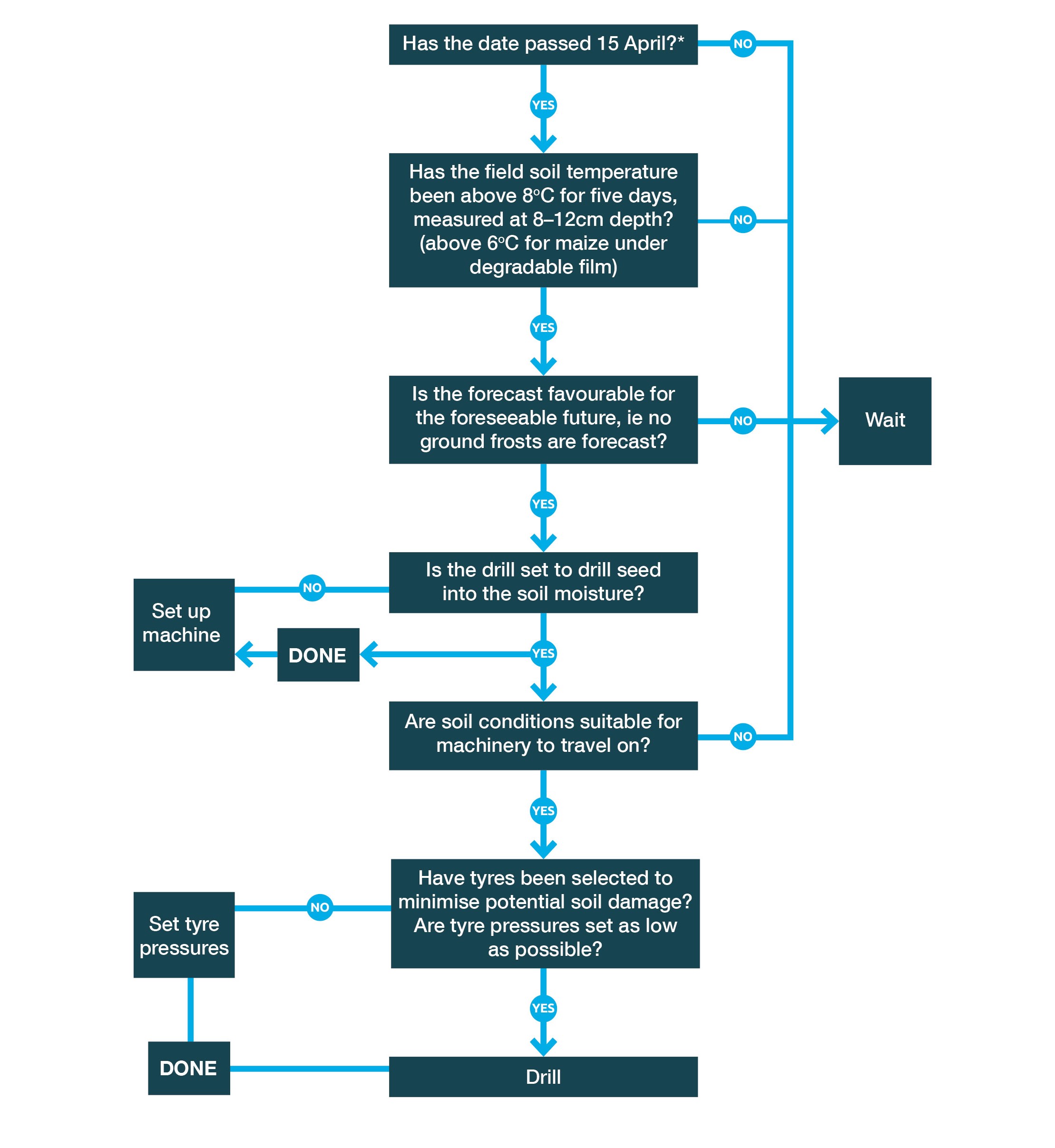- Home
- Knowledge library
- Establishing maize
Establishing maize
Read our tips on establishing maize, from cultivating to drilling, and solving any compaction issues.
Back to: Growing maize for silage
When to drill maize
Refer to this decision tree when planning to drill forage maize.

*This date is rough guidance; some maize growers drill earlier when soil conditions and temperature are right.
Cultivating maize
Seedbed quality and careful sowing technique are important. A good seedbed:
- Allows excellent seed-soil-moisture contact
- Encourages deep and expansive root development
- Has a moderately cloddy surface which reduces surface capping but enables good weed control
Most fields prepared for maize are ploughed. The secondary cultivation depends on the site and local conditions. These could include the use of power harrows (being careful not to over-cultivate the seedbed) and tined machines.
While most maize is precision-drilled following the plough, an increasing area is being established with min-till or strip tillage.
Min-till – Maize is sown into uncultivated or rough-cultivated ground. This can cut establishment costs and reduce soil erosion and run-off but should only be considered if soil structure is good.
Strip tillage – Maize is drilled into cultivated strips within an uncultivated field, leaving the rest of the field undisturbed. This reduces the cost and increases the speed of establishment.
Preventing and treating maize compaction
Like other crops harvested in autumn, maize fields are susceptible to soil compaction because of heavy harvest machinery travelling on weak, moist soils. Plants that struggle to penetrate the hard layers in the ground do not grow well and deliver low yields.
Prevention
- Only travel when ground conditions are good
- Use machinery with suitably profiled and low ground-pressure tyres
- Minimise machinery passes over the field
Treatment
- If compaction is suspected, dig soil pits, look for hard, compressed horizontal layers and determine their depth
- Compaction within the top 15–20 cm (6–8 in) will be removed by ploughing
- If compaction lies deeper than 20 cm, use machinery to lift or subsoil 2.5 cm (1 in) below the problem layer. Note, there are slurry spreading restrictions within 12 months of subsoiling over drains
- Deeper soil structure issues are best dealt with post-ploughing using specialist machinery
Sowing and timing maize
Maize is usually precision drilled in rows, 76 cm (30 in) apart. The seeds should be evenly spaced within the row and placed at a consistent depth. This encourages the seedlings to emerge at the same time, minimising competition between plants.
Seeds should be sown into moist soils so their seed coats can soften and germinate. Drilling depth can vary from 2.5–10 cm (1–4 in) deep, depending on soil moisture depth.
Maize drilling should start when soil temperatures reach 8°C for five consecutive days or 6°C for maize grown under degradable film. This is generally after 15 April, although some maize growers drill earlier. Other factors to consider include the weather forecast and ground conditions.
Most maize seedbed preparation and drilling is undertaken by contractors. Experienced operators will help producers optimise their forage yields. The National Association of Agricultural Contractors has guidelines on charges for this service.
Useful links
Download our guide to growing and feeding maize silage
To order a hard copy of the Growing and feeding maize for better returns manual, please contact publications@ahdb.org.uk or call 0247 799 0069.
Learn more about undersowing maize
Information on correcting soil compaction
Information on arable soil management: Cultivation and crop establishment
Topics:
Sectors:
Tags:

